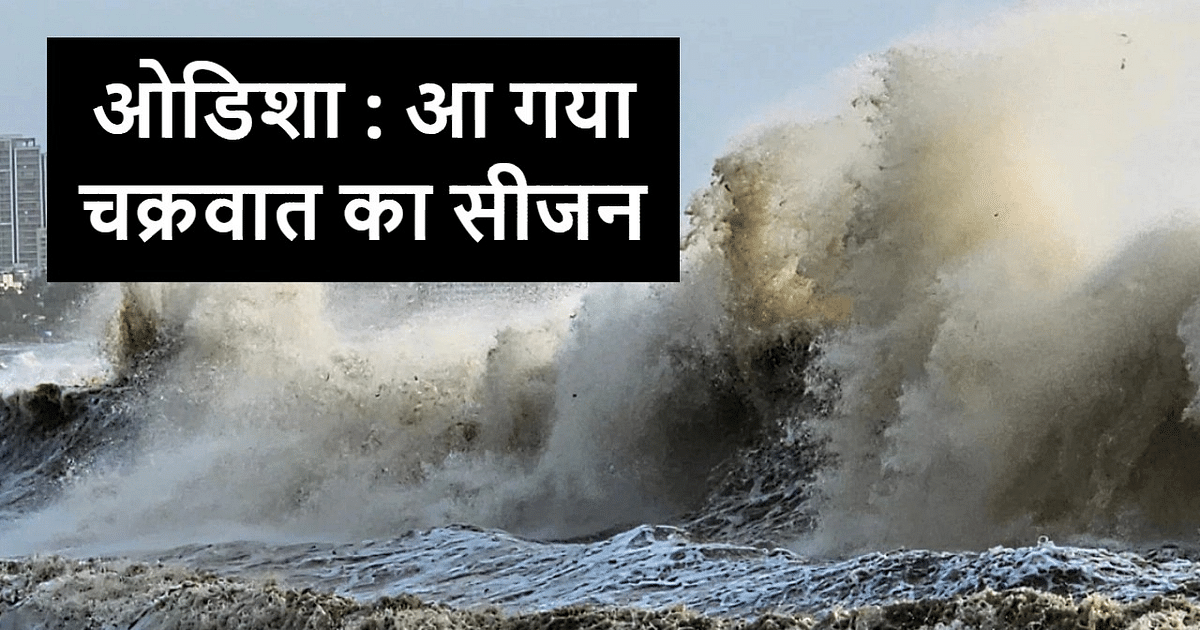Monsoon season brings relief for the farmers of the country. But, when it goes, the tension of Odisha government increases. The worry of the people there increases. Especially the people living in coastal areas. This is the reason why the round of meetings of senior officers of Odisha has started. Necessary instructions are being given to the District Magistrates. They are being reminded of the major cyclones that occurred on October 29, 1999 and thereafter. It is being told that the months of October and November Odisha How sensitive it is to. These two months are known as ‘cyclone period’ in Odisha. Especially in the 45 days after the withdrawal of monsoon. This is the reason why the Chief Secretary has sat with the officials of different departments and asked them to ask the officials of the concerned departments to remain in alert mode from now onwards to control the situation due to the cyclone and its aftermath. District Magistrates have also been asked to motivate the officers of their district to work with cooperation and coordination. Officers have been told to make all preparations to deal with the cyclonic storm by October 10. Make sure to make all the arrangements also.
CS of Odisha held high level meeting
Odisha Chief Secretary PK Jena took a high level meeting and asked the officials to start the work of coordination with all the departments from now on. He has told the officers that they already have an SOP to deal with such a situation. Start working on it right now. Ask officials of departments to work together to deal with emergencies. HR Biswas, head of the Regional Meteorological Centre, Bhubaneswar, told the Chief Secretary that there are indications that the monsoon will withdraw by October 10. There is a need to remain completely alert for the next 45 days.
Big cyclones arise in the sea in October-November
HK Biswas has told the Odisha government that the cyclone season begins in Odisha after the withdrawal of the south-west monsoon. It is during this period that big cyclones arise in the sea. Odisha has faced cyclones many times till now. Thousands of people have lost their lives. Infrastructure worth billions of rupees has been damaged. Even the forests and environment have suffered a lot. Therefore, there is a need to be alert and careful from now on. Odisha has still not forgotten the super cyclone of 1999. This super cyclone that came on 29 October 1999 had caused huge devastation. More than 10 thousand people died and thousands of crores of rupees were lost.
There were more than 10 thousand deaths in the super cyclone of 1999.
Even after this, many cyclones came, which devastated the infrastructure and environment of Odisha. After the super cyclone of 1999, ‘Phailin’ cyclone came in October 2013. Its maximum impact was in Ganjam, Puri and Khurda districts. Thousands of villages were affected. Recently, in the meeting held in Bhubaneswar, the capital of Odisha, Development Commissioner, Special Relief Commissioner, Head of Regional Meteorological Center located in Bhubaneswar, HK Biswas, heads of 12 departments, Special Relief Commissioner, Chief of National Disaster Response Force (NDRF), Odisha. The Chief of the State Disaster Response Force (OSDRF) and the Director General of the Fire Services Department participated. In view of the earlier cyclones in the state, the Chief Secretary asked the District Magistrates of sensitive areas to lay emphasis on cooperation and coordination between the departments, so that when disaster strikes, it would be easier to deal with it. Its impact can be minimized.

